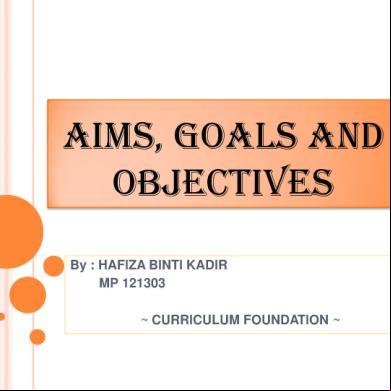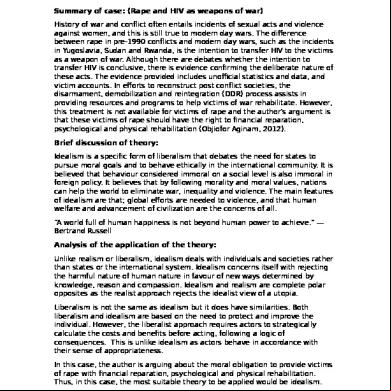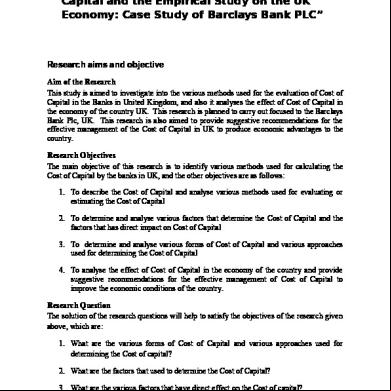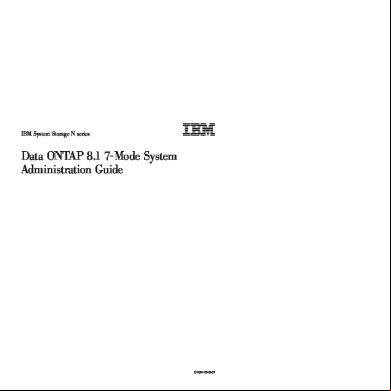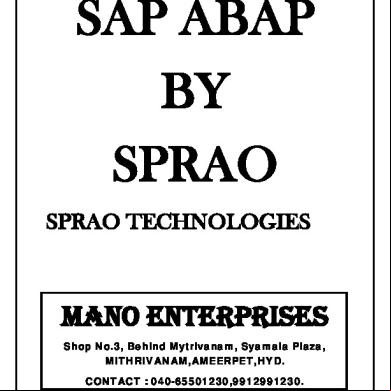Niti Ayog_ Aims, Objectives And Structure 5z6m29
This document was ed by and they confirmed that they have the permission to share it. If you are author or own the copyright of this book, please report to us by using this report form. Report 3b7i
Overview 3e4r5l
& View Niti Ayog_ Aims, Objectives And Structure as PDF for free.
More details w3441
- Words: 601
- Pages: 2
6/20/2017
Niti Ayog: Aims, Objectives and Structure General Knowledge Today
The Government of India has established Niti Ayog as a “Think Tank” which has no power to impose policies. By establishing Niti Ayog the government wants to be an “enabler” and leaves the impetus to provide a platform for cooperative and competitive federalism to the newly established body. India was probably the first nonCommunist country which went for central planning. Starting with the HarrodDomar Model and later statistics of Mahalanobis model, the planning commission set out sector specific output and investment targets. It was strong enough to have a final say on resource allocation. For the last few decades, funds were simply tied to not only successful but also failed schemes because vested interests demanded their continuation. There was an increasingly frustration in the states but they had to yield to the arrogant fund controlling body. Most underdeveloped states including the North East had to suffer due to the dogged prescription of onesizefitsall schemes by the planning commission. The Niti Ayog seeks to give up the one size fits all prescriptions for a huge country like India with lots of vertical and horizontal imbalances. Whether it would be able to carve out its unique place in today’s time, is yet to be seen. Contents [hide] Aims and Objectives of Niti Ayog Composition of NITI Ayog
Aims and Objectives of Niti Ayog NITI Aayog is essentially an advisory body that seeks to provide critical directional and strategic inputs across spectrum of key elements of policy to the centre as well as states. It also seeks to put an end to the slow and tardy implementation of the policy by fostering interministry, interstate and centrestate coordination. Strong states make a strong nation, is the core idea; and the Ayog will foster cooperative federalism by evolving a shared vision of national development priorities. It has been envisaged to follow the bottomtop development approach whereby, it would develop mechanisms to formulate credible plans to the village level and aggregate these progressively at higher levels of government. It would also pay attention to the weaker sections of the society that may not have benefitted from economic progress. It would create a knowledge, innovation and entrepreneurial system via a community of national and international experts, practitioners and partners. It would serve as a platform for resolution of intersectoral and inter departmental issues in order to accelerate the implementation of the development agenda. It will also monitor and evaluate the implementation of programmes, and focus on technology upgradation and capacity building.
Composition of NITI Ayog Chairperson Prime Minister Governing Council – Its are Chief Ministers and s of the Union Territories Regional Councils These would be created as per need and its would be chief ministers and s of UTs of respective regions. http://www.gktoday.in/blog/nitiayogaimsobjectivesandstructure/
1/2
6/20/2017
Niti Ayog: Aims, Objectives and Structure General Knowledge Today
ViceChairperson – The Vicechairperson of the Niti Ayog will be appointed by Prime Minister. The first ViceChairperson of Niti Ayog is Arvind Panagariya. Further, the Niti Ayog has full time (number unspecified), part time (maximum 2 , these would be scholars from universities and research institutions), Exofficio (maximum 4, these are ministers from Union Council of Ministers), Special Invitees (appointed by PM for fixed tenure. Finally, there is a Chief Executive Officer (CEO) of the Niti Ayog, who is appointed by Prime Minister and has a rank similar to Secretary to the Government of India. Current CEO was named on January 10 (Sindhushree Khullar ). The secretariat will be established if deemed necessary.
http://www.gktoday.in/blog/nitiayogaimsobjectivesandstructure/
2/2
Niti Ayog: Aims, Objectives and Structure General Knowledge Today
The Government of India has established Niti Ayog as a “Think Tank” which has no power to impose policies. By establishing Niti Ayog the government wants to be an “enabler” and leaves the impetus to provide a platform for cooperative and competitive federalism to the newly established body. India was probably the first nonCommunist country which went for central planning. Starting with the HarrodDomar Model and later statistics of Mahalanobis model, the planning commission set out sector specific output and investment targets. It was strong enough to have a final say on resource allocation. For the last few decades, funds were simply tied to not only successful but also failed schemes because vested interests demanded their continuation. There was an increasingly frustration in the states but they had to yield to the arrogant fund controlling body. Most underdeveloped states including the North East had to suffer due to the dogged prescription of onesizefitsall schemes by the planning commission. The Niti Ayog seeks to give up the one size fits all prescriptions for a huge country like India with lots of vertical and horizontal imbalances. Whether it would be able to carve out its unique place in today’s time, is yet to be seen. Contents [hide] Aims and Objectives of Niti Ayog Composition of NITI Ayog
Aims and Objectives of Niti Ayog NITI Aayog is essentially an advisory body that seeks to provide critical directional and strategic inputs across spectrum of key elements of policy to the centre as well as states. It also seeks to put an end to the slow and tardy implementation of the policy by fostering interministry, interstate and centrestate coordination. Strong states make a strong nation, is the core idea; and the Ayog will foster cooperative federalism by evolving a shared vision of national development priorities. It has been envisaged to follow the bottomtop development approach whereby, it would develop mechanisms to formulate credible plans to the village level and aggregate these progressively at higher levels of government. It would also pay attention to the weaker sections of the society that may not have benefitted from economic progress. It would create a knowledge, innovation and entrepreneurial system via a community of national and international experts, practitioners and partners. It would serve as a platform for resolution of intersectoral and inter departmental issues in order to accelerate the implementation of the development agenda. It will also monitor and evaluate the implementation of programmes, and focus on technology upgradation and capacity building.
Composition of NITI Ayog Chairperson Prime Minister Governing Council – Its are Chief Ministers and s of the Union Territories Regional Councils These would be created as per need and its would be chief ministers and s of UTs of respective regions. http://www.gktoday.in/blog/nitiayogaimsobjectivesandstructure/
1/2
6/20/2017
Niti Ayog: Aims, Objectives and Structure General Knowledge Today
ViceChairperson – The Vicechairperson of the Niti Ayog will be appointed by Prime Minister. The first ViceChairperson of Niti Ayog is Arvind Panagariya. Further, the Niti Ayog has full time (number unspecified), part time (maximum 2 , these would be scholars from universities and research institutions), Exofficio (maximum 4, these are ministers from Union Council of Ministers), Special Invitees (appointed by PM for fixed tenure. Finally, there is a Chief Executive Officer (CEO) of the Niti Ayog, who is appointed by Prime Minister and has a rank similar to Secretary to the Government of India. Current CEO was named on January 10 (Sindhushree Khullar ). The secretariat will be established if deemed necessary.
http://www.gktoday.in/blog/nitiayogaimsobjectivesandstructure/
2/2

